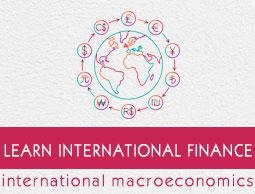International Financial Globalization
In the last two decades, the financial economies have increasingly got interconnected around the world. The impact of globalization has been felt in every aspect of economy. Financial globalization has offered substantial benefits to the national economies and to both investors and wealth creators. However, it has a wreaking effect on financial markets as well.
Driving Forces of Financial Globalization
When we talk about financial globalization, there are four major factors to be considered. They are −
Advancement in information and communication technologies − Technological advancements have made market players and governments far more efficient in collecting the information needed to manage financial risks.
Globalization of national economies − Economic globalization has made production, consumption, and investments dispersed over various geographic locations. As barriers to international trade have been lowered, international flows of goods and services have dramatically increased.
Liberalization of national financial and capital markets − Liberalization and fast improvements in IT and the globalization of national economies have resulted in highly spread financial innovations. It has increased the growth of international capital movements.
Competition among intermediary services providers − Competition has increased manifold due to technological advancements and financial liberalization. A new class of nonbank financial entities, including institutional investors, have also emerged.
Changes in Capital Markets
The driving forces of financial globalization have led to four dramatic changes in the structure of national and international capital markets.
First, banking systems have been under a process of disintermediation. Financial intermediation is happening more through tradable securities and not through bank loans and deposits.
Second, cross-border financing has increased. Investors are now trying to enhance their returns by diversifying their portfolios internationally. They are now seeking the best investment opportunities from around the world.
Third, the non-banking financial institutions are competing with banks in national and international markets, decreasing the prices of financial instruments. They are taking advantage of economies of scale.
Fourth, banks have accessed a market beyond their traditional businesses. It has enabled the banks to diversify their sources of income and the risks.
Benefits and Risks of Financial Globalization
One of the major benefits of Financial Globalization is that the risk of a "credit crunch" has been reduced to extremely low levels. When banks are under strain, they can now raise funds from international capital markets.
Another benefit is that, with more choices, borrowers and investors get a better pricing on their financing. Corporations can finance the investments more cheaply.
The disadvantage is that the markets are now extremely volatile, and this can be a threat to financial stability. Financial globalization has altered the balance of risks in international capital markets.
With financial globalization, creditworthy banks and businesses in emerging markets can now reduce their borrowing costs. However, emerging markets with weak or poorly managed banks are at risk.
Safeguarding Financial Stability
The crises of the 1990s have shown the importance for a prudent sovereign debt management, effective capital account liberalization, and management of domestic financial systems.
Private financial institutions and market players can now contribute to financial stability by managing their businesses well and avoiding unnecessary risk-taking.
As financial stability is a global public good, governments and regulators also play a key role in it. The scope of this role is increasingly getting international.
The IMF is a key role-player as well. Its global surveillance initiatives to enhance its ability to manage international financial stability must also stay in track.


